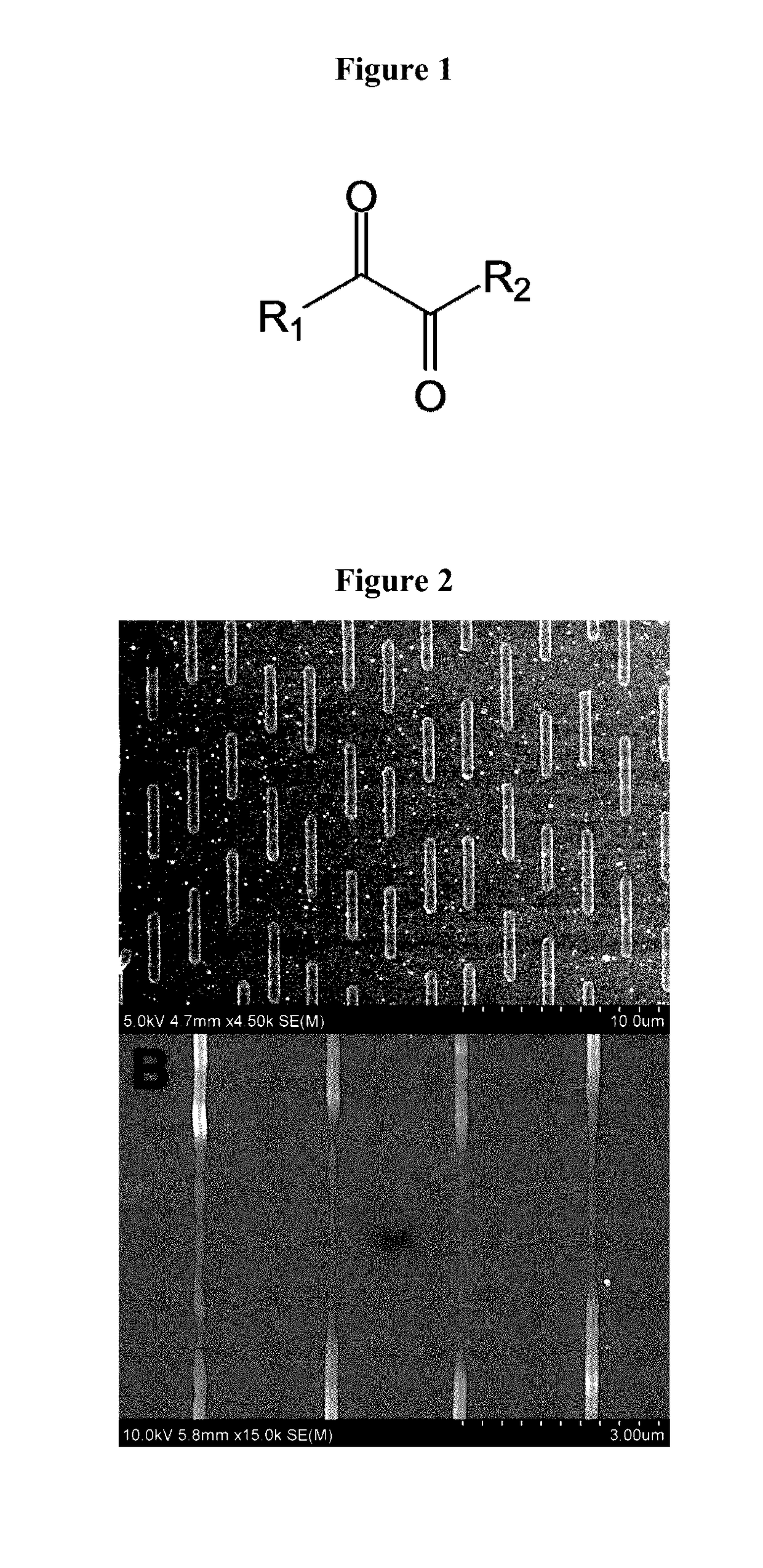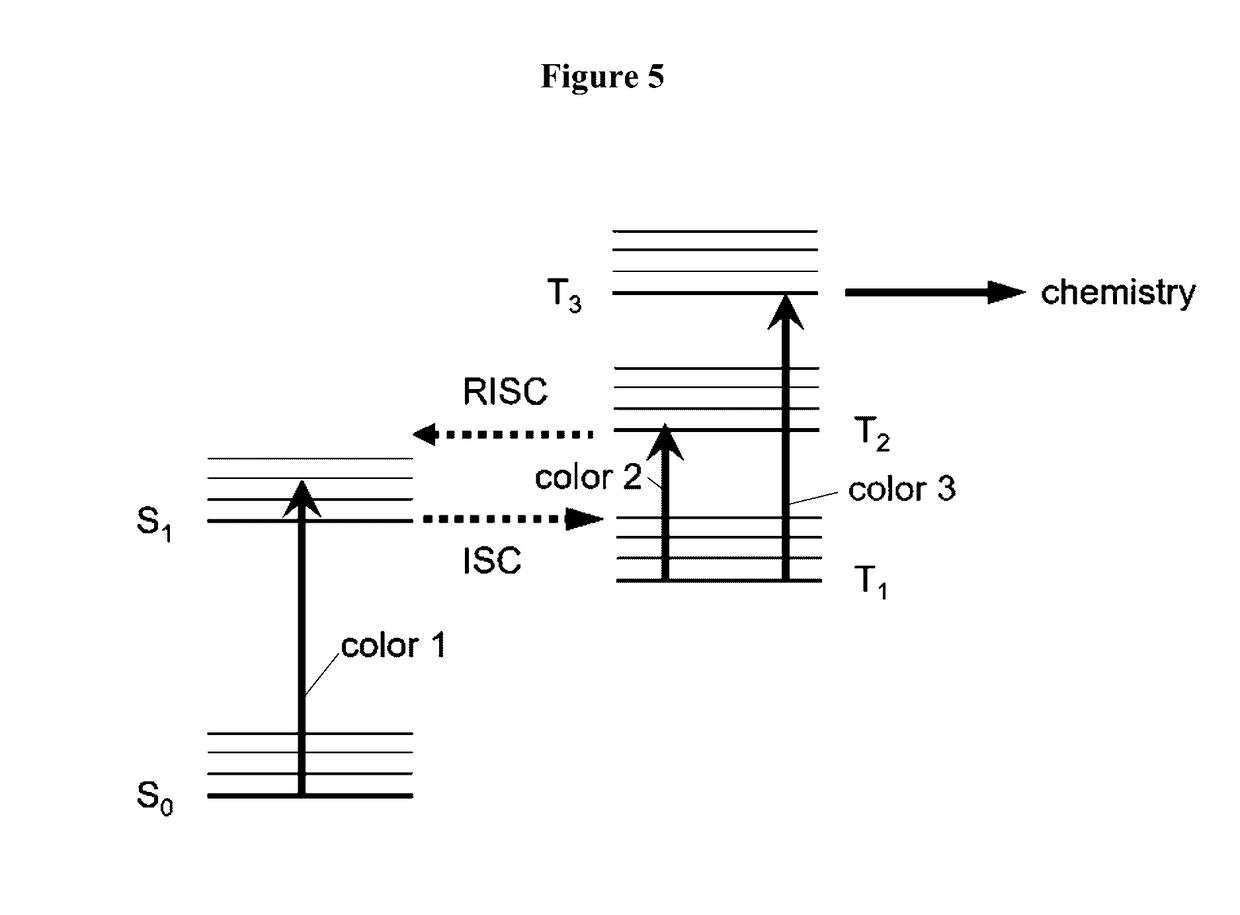Multicolor Photolithography Materials and Methods
a technology of photolithography and materials, applied in the field of photoresist compositions, can solve the problems of increasing difficulty in optics and material chemistry, and increasing difficulty in generating, propagating and manipulating light, etc., to achieve the effect of eliminating competition, generating, propagating and manipulating easily
- Summary
- Abstract
- Description
- Claims
- Application Information
AI Technical Summary
Benefits of technology
Problems solved by technology
Method used
Image
Examples
Embodiment Construction
[0040]The present invention is directed to photoresist compositions and photolithography methods preferably utilizing the disclosed compositions. The photoresist compositions comprise a class of molecules that act as three-color radical photoinitiators. The operating principle of the disclosed materials is to use a first radiation source that emits a first color or wavelength of light to excite the molecules to an unreactive, “pre-activated” state. A second radiation source emits a second color or wavelength of light which deactivates the molecules in selected spatial locations. Finally, a third radiation source emits a third color or wavelength of light takes any remaining pre-activated molecules to an activated state that leads to chemical reaction. Note that the first, second and third colors or wavelengths of light may be different and / or alternatively have differing emission characteristics (e.g., such as pulsed, continuous wave, etc.). Thus, in some embodiments, the first, sec...
PUM
| Property | Measurement | Unit |
|---|---|---|
| weight percent | aaaaa | aaaaa |
| weight percent | aaaaa | aaaaa |
| weight percent | aaaaa | aaaaa |
Abstract
Description
Claims
Application Information
 Login to View More
Login to View More - R&D
- Intellectual Property
- Life Sciences
- Materials
- Tech Scout
- Unparalleled Data Quality
- Higher Quality Content
- 60% Fewer Hallucinations
Browse by: Latest US Patents, China's latest patents, Technical Efficacy Thesaurus, Application Domain, Technology Topic, Popular Technical Reports.
© 2025 PatSnap. All rights reserved.Legal|Privacy policy|Modern Slavery Act Transparency Statement|Sitemap|About US| Contact US: help@patsnap.com



